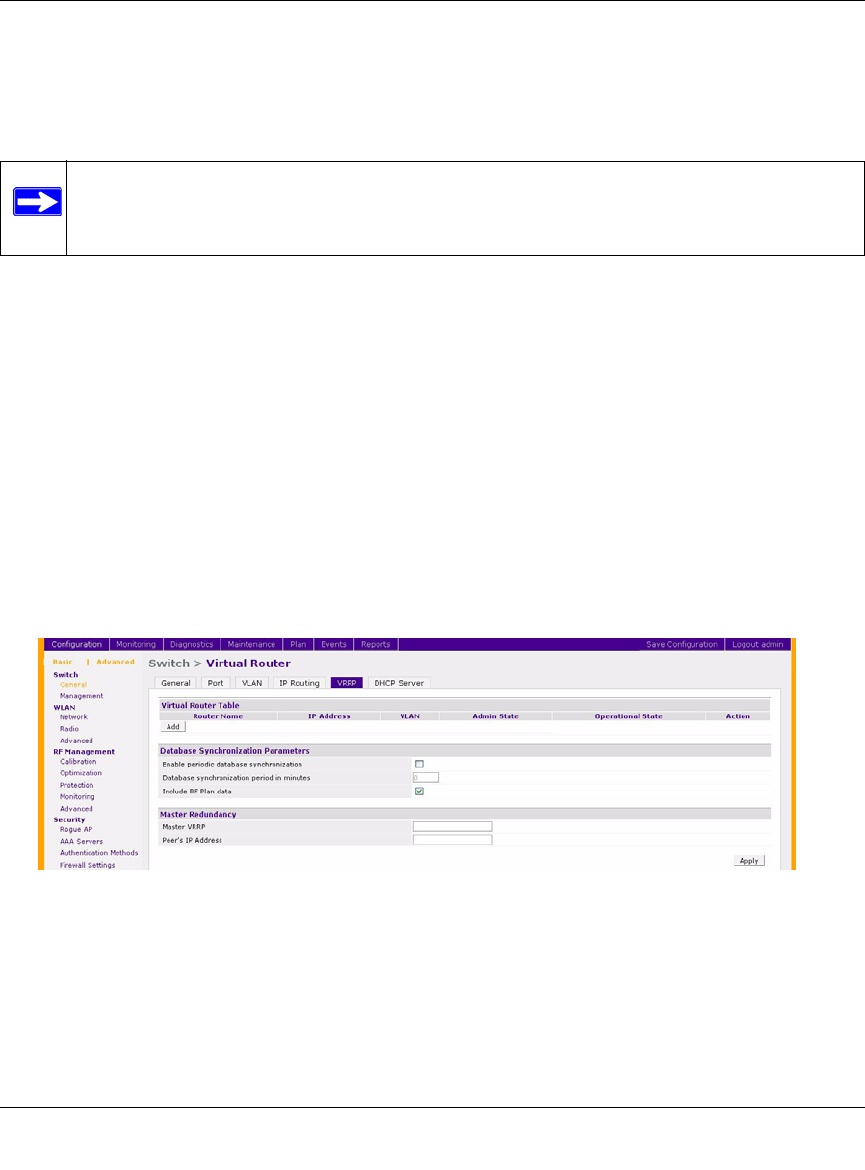- Netgear ProSafe WFS709TP Smart Wireless Controller Manual
Table Of Contents
- WFS709TP ProSafe Smart Wireless Switch Software Administration Manual
- Contents
- About This Manual
- Chapter 1 Overview of the WFS709TP
- Chapter 2 Deploying a Basic WFS709TP System
- Chapter 3 Configuring Network Parameters
- Chapter 4 RF Plan
- Chapter 5 Configuring WLANS
- Chapter 6 Configuring AAA Servers
- Chapter 7 Configuring 802.1x Authentication
- Chapter 8 Configuring the Captive Portal
- Chapter 9 Configuring MAC-Based Authentication
- Chapter 10 Adding Local WFS709TPs
- Chapter 11 Configuring Redundancy
- Chapter 12 Configuring Wireless Intrusion Protection
- Chapter 13 Configuring Management Utilities
- Chapter 14 Configuring WFS709TP for Voice
- Appendix A Configuring DHCP with Vendor-Specific Options
- Appendix B Windows Client Example Configuration for 802.1x
- Appendix C Internal Captive Portal
- Appendix D Related Documents
- Index

WFS709TP ProSafe Smart Wireless Switch Software Administration Manual
11-2 Configuring Redundancy
v1.0, June 2007
Local WFS709TP redundancy refers to providing redundancy for a WFS709TP such that the APs
under its control failover to a backup WFS709TP if their master WFS709TPr becomes
unavailable. Local WFS709TP redundancy is provided by running VRRP between a pair of
WFS709TPs.
The APs are then configured to connect to the VIP configured for the VRRP instance.
Configuring Local WFS709TP Redundancy
To configure redundancy for a local WFS709TP:
1. Collect the following information needed to configure local WFS709TP redundancy:
• VLAN ID on the two local WFS709TPs that are on the same Layer 2 network and will be
used to configure VRRP
• Virtual IP address to be used for the VRRP instance
2. Navigate to the Configuration > Advanced> Switch > General > VRRP page on the browser
interface for each of the local WFS709TPs. Click Add to create a VRRP instance.
3. Enter the VRRP parameters for the VRRP instance.
Table 11-1 explains what each of the parameters means and the recommended/expected values
for this configuration.
Note: The two WFS709TPs need to be connected on the same broadcast domain (or
Layer 2 connected) for VRRP operation, and both should be running the same
firmware version.
Figure 11-1










